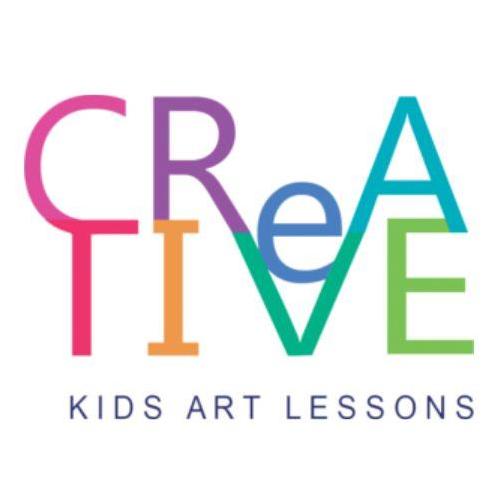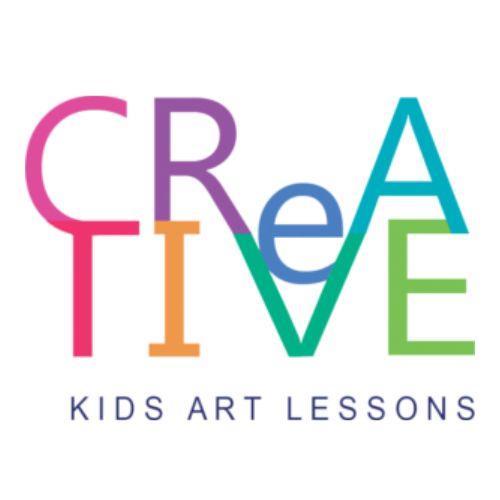Our art lesson plans are designed for specialist art teachers and classroom teachers. Creative Kids Art Lessons for teachers and parents. Art lesson plans from kindergarten to grade 6. Creative Kids Art Lessons has a team of specialist art teachers, artists, and classroom teachers, working on lesson plans and programs.
- Female
- Followed by 1 people
Recent Updates
- Supportive Art Teacher Lesson Plans: Inspiring Creativity and Growth
Supportive art teacher lesson plans are key to fostering an inclusive and nurturing environment where students feel encouraged to express their creativity. A well-structured plan focuses not only on teaching technical skills but also on promoting confidence, self-expression, and individual growth.
The foundation of a supportive lesson plan lies in balancing instruction with flexibility. Teachers can begin with structured demonstrations, such as showing how to blend colors or create texture, followed by activities that allow students to explore these techniques in their own style. This balance ensures that students develop essential skills while feeling free to experiment.
Incorporating diverse themes in lessons—like nature, emotions, or cultural art forms—allows students to connect their work with personal experiences. Offering choice in assignments, such as selecting their preferred medium or project topic, can also boost engagement and motivation.
Assessment within supportive art lesson plans emphasizes effort, creativity, and improvement over perfection. Teachers can use positive feedback to highlight student strengths, helping them feel valued. Peer reviews or group discussions provide additional opportunities for constructive learning and inspire collaboration.
A supportive art classroom also takes into account the emotional well-being of students. Incorporating mindfulness activities, such as reflective drawing or visual journaling, helps them manage stress and express emotions through art.
Ultimately, supportive art teacher lesson plans create a safe space where every student feels empowered to explore their artistic abilities. With thoughtful guidance, teachers can unlock hidden potential and inspire students to develop both as artists and individuals.
VISIT HERE:- https://www.creativekidsartlessons.com/
Supportive Art Teacher Lesson Plans: Inspiring Creativity and Growth Supportive art teacher lesson plans are key to fostering an inclusive and nurturing environment where students feel encouraged to express their creativity. A well-structured plan focuses not only on teaching technical skills but also on promoting confidence, self-expression, and individual growth. The foundation of a supportive lesson plan lies in balancing instruction with flexibility. Teachers can begin with structured demonstrations, such as showing how to blend colors or create texture, followed by activities that allow students to explore these techniques in their own style. This balance ensures that students develop essential skills while feeling free to experiment. Incorporating diverse themes in lessons—like nature, emotions, or cultural art forms—allows students to connect their work with personal experiences. Offering choice in assignments, such as selecting their preferred medium or project topic, can also boost engagement and motivation. Assessment within supportive art lesson plans emphasizes effort, creativity, and improvement over perfection. Teachers can use positive feedback to highlight student strengths, helping them feel valued. Peer reviews or group discussions provide additional opportunities for constructive learning and inspire collaboration. A supportive art classroom also takes into account the emotional well-being of students. Incorporating mindfulness activities, such as reflective drawing or visual journaling, helps them manage stress and express emotions through art. Ultimately, supportive art teacher lesson plans create a safe space where every student feels empowered to explore their artistic abilities. With thoughtful guidance, teachers can unlock hidden potential and inspire students to develop both as artists and individuals. VISIT HERE:- https://www.creativekidsartlessons.com/0 Comments 0 Shares - "Discover the Joy of Art Classes for Your Kindergartener"
Introduction
Art classes offer a wonderful opportunity for kindergarteners to explore their creativity and express themselves in unique ways. These classes are not only fun but also play a crucial role in the developmental journey of young children. In this article, we will explore the many joys and benefits of art classes for kindergarteners and how they can positively impact your child's growth.
Why Art Classes Are Important for Kindergarteners
Art classes provide a safe and stimulating environment for children to express their thoughts and feelings. For kindergarteners, who are at a critical stage of development, these classes offer several benefits. Engaging in art helps children develop fine motor skills, enhances their cognitive abilities, and encourages emotional expression. Additionally, art classes foster creativity and imagination, which are essential for problem-solving and innovative thinking.
The structured yet flexible nature of art classes allows children to explore different materials and techniques. This exploration helps them understand the properties of various mediums and learn how to manipulate them to create desired outcomes. Such experiences are invaluable as they contribute to a child's overall learning and development.
Top Art Activities for Kindergarteners
Introducing kindergarteners to a variety of art activities can keep them engaged and excited about learning. Here are some top art activities that are perfect for young children:
Drawing and Coloring: Simple drawing and coloring activities can help children develop fine motor skills and hand-eye coordination. Providing a variety of coloring tools, such as crayons, markers, and colored pencils, can enhance their experience.
Painting: Using watercolors, tempera paints, or finger paints, children can explore color mixing and texture. Painting allows children to express their emotions and creativity freely.
Collage Making: Collages are a great way to introduce children to mixed media art. Using materials like paper, fabric, buttons, and leaves, children can create unique and textured artworks.
Clay Modeling: Working with clay helps improve fine motor skills and spatial awareness. Children can create simple sculptures, which also enhances their three-dimensional thinking.
Printmaking: Using objects like sponges, stamps, and leaves, children can create interesting patterns and prints. This activity helps them understand repetition and design.
How Art Enhances Cognitive Development
Art classes significantly contribute to the cognitive development of kindergarteners. Engaging in artistic activities stimulates brain function and helps develop critical thinking skills. When children create art, they are required to make decisions about colors, shapes, and compositions. These decisions foster problem-solving abilities and improve their capacity for abstract thinking.
Art also enhances memory and attention to detail. As children focus on completing their projects, they develop concentration and perseverance. Moreover, discussing their artwork with teachers and peers helps improve their communication skills and ability to articulate their thoughts.
Building Social Skills Through Art
Art classes provide an excellent platform for social interaction. Working on group projects or sharing art supplies encourages children to collaborate and communicate effectively. These interactions are crucial for developing social skills such as cooperation, sharing, and empathy.
Participating in art activities also helps children learn to give and receive feedback. Constructive criticism allows them to improve their skills and understand different perspectives. This experience is invaluable for their social and emotional growth, as it teaches them to appreciate the work of others and handle feedback positively.
Boosting Confidence and Self-Esteem
Creating art is a powerful way to boost a child's confidence and self-esteem. Completing an art project gives children a sense of accomplishment and pride in their work. This positive reinforcement encourages them to take on new challenges and believe in their abilities.
Art classes provide a supportive environment where children can express themselves without fear of judgment. This freedom to create and experiment helps build their self-confidence and encourages them to embrace their individuality.
Conclusion
Art classes for kindergarteners offer a myriad of benefits, from enhancing cognitive development and fine motor skills to boosting confidence and social abilities. By providing a creative outlet, these classes help young children discover the joy of self-expression and foster a lifelong appreciation for the arts. Investing in art education for your kindergartener is an investment in their overall growth and well-being.
VISIT HERE:- https://www.creativekidsartlessons.com/kindergarten-art-lesson-plans/
"Discover the Joy of Art Classes for Your Kindergartener" Introduction Art classes offer a wonderful opportunity for kindergarteners to explore their creativity and express themselves in unique ways. These classes are not only fun but also play a crucial role in the developmental journey of young children. In this article, we will explore the many joys and benefits of art classes for kindergarteners and how they can positively impact your child's growth. Why Art Classes Are Important for Kindergarteners Art classes provide a safe and stimulating environment for children to express their thoughts and feelings. For kindergarteners, who are at a critical stage of development, these classes offer several benefits. Engaging in art helps children develop fine motor skills, enhances their cognitive abilities, and encourages emotional expression. Additionally, art classes foster creativity and imagination, which are essential for problem-solving and innovative thinking. The structured yet flexible nature of art classes allows children to explore different materials and techniques. This exploration helps them understand the properties of various mediums and learn how to manipulate them to create desired outcomes. Such experiences are invaluable as they contribute to a child's overall learning and development. Top Art Activities for Kindergarteners Introducing kindergarteners to a variety of art activities can keep them engaged and excited about learning. Here are some top art activities that are perfect for young children: Drawing and Coloring: Simple drawing and coloring activities can help children develop fine motor skills and hand-eye coordination. Providing a variety of coloring tools, such as crayons, markers, and colored pencils, can enhance their experience. Painting: Using watercolors, tempera paints, or finger paints, children can explore color mixing and texture. Painting allows children to express their emotions and creativity freely. Collage Making: Collages are a great way to introduce children to mixed media art. Using materials like paper, fabric, buttons, and leaves, children can create unique and textured artworks. Clay Modeling: Working with clay helps improve fine motor skills and spatial awareness. Children can create simple sculptures, which also enhances their three-dimensional thinking. Printmaking: Using objects like sponges, stamps, and leaves, children can create interesting patterns and prints. This activity helps them understand repetition and design. How Art Enhances Cognitive Development Art classes significantly contribute to the cognitive development of kindergarteners. Engaging in artistic activities stimulates brain function and helps develop critical thinking skills. When children create art, they are required to make decisions about colors, shapes, and compositions. These decisions foster problem-solving abilities and improve their capacity for abstract thinking. Art also enhances memory and attention to detail. As children focus on completing their projects, they develop concentration and perseverance. Moreover, discussing their artwork with teachers and peers helps improve their communication skills and ability to articulate their thoughts. Building Social Skills Through Art Art classes provide an excellent platform for social interaction. Working on group projects or sharing art supplies encourages children to collaborate and communicate effectively. These interactions are crucial for developing social skills such as cooperation, sharing, and empathy. Participating in art activities also helps children learn to give and receive feedback. Constructive criticism allows them to improve their skills and understand different perspectives. This experience is invaluable for their social and emotional growth, as it teaches them to appreciate the work of others and handle feedback positively. Boosting Confidence and Self-Esteem Creating art is a powerful way to boost a child's confidence and self-esteem. Completing an art project gives children a sense of accomplishment and pride in their work. This positive reinforcement encourages them to take on new challenges and believe in their abilities. Art classes provide a supportive environment where children can express themselves without fear of judgment. This freedom to create and experiment helps build their self-confidence and encourages them to embrace their individuality. Conclusion Art classes for kindergarteners offer a myriad of benefits, from enhancing cognitive development and fine motor skills to boosting confidence and social abilities. By providing a creative outlet, these classes help young children discover the joy of self-expression and foster a lifelong appreciation for the arts. Investing in art education for your kindergartener is an investment in their overall growth and well-being. VISIT HERE:- https://www.creativekidsartlessons.com/kindergarten-art-lesson-plans/0 Comments 0 Shares
More Stories



